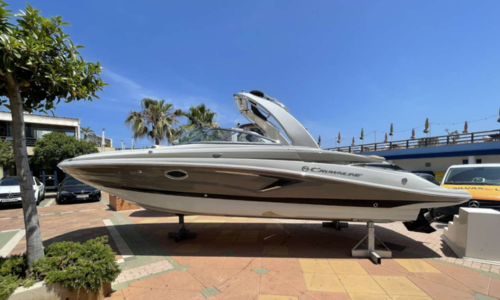Why do boats float?
Los barcos son maravillas de la ingeniería que nos permiten explorar los océanos y disfrutar del agua. ¿Alguna vez te has preguntado cómo es posible que estos enormes objetos floten en lugar de hundirse? En esta entrada de blog, vamos a sumergirnos en la ciencia de la flotabilidad de los barcos y descubrir cómo se mantienen a flote.
Archimedes’ principle of buoyancy.
Archimedes’ principle is the key to understanding why ships float. According to this principle, an object immersed in a fluid experiences an upward thrust force equal to the weight of the displaced fluid. In the case of boats, the water exerts an upward force that counteracts their weight and keeps them afloat.
The design of the hull and the shape of the ships.
Hull design is essential to the buoyancy of ships. Hulls are designed to displace a large amount of water and distribute buoyancy force evenly. The curved shape of the hull helps reduce drag and allows the boat to move efficiently through the water.
Hull shape and buoyancy.
The shape of the hull can vary according to the type of boat. Round-hulled boats, such as sailboats, have greater buoyancy due to their curved shape that allows more water to be displaced. On the other hand, V-hulled boats have better stability and performance on the water, as they cut through the waves and reduce drag.
In addition to the shape of the hull, the interior design of the boat can also influence its buoyancy. Watertight compartments, which are watertight and airtight areas inside the boat, help prevent water ingress in the event of a possible accident or leak. This helps to keep the boat afloat even in adverse situations.
Materials and buoyancy.
In addition to hull design, the materials used in the construction of boats also affect their buoyancy. Modern boats are built with lightweight but strong materials, such as aluminium or fibreglass. These materials reduce the weight of the boat and contribute to its ability to float on water.
However, it is not only about the choice of materials, but also about the quality of the construction. Proper sealing and finishing of the hull and structure of the boat is essential to prevent water ingress and ensure long-term buoyancy.
Water displacement and buoyancy.
Water displacement is a determining factor in the buoyancy of ships. The more water a boat displaces, the greater the buoyancy force acting on it. Larger ships, with greater volume and displacement capacity, have greater buoyancy and are more stable in the water.
Water displacement is calculated by multiplying the volume of the boat by the density of the water in which it floats. The volume of the boat is determined by the dimensions and shape of the hull. This is why larger boats can displace a greater amount of water and, consequently, have a greater buoyancy.
Stability and balance in ships.
Stability is crucial to keep a boat afloat. Boats are designed with balancing systems, such as keels and ballast, which help counteract external forces that could cause the boat to tilt. Keels act as fins that reduce drift and improve directional stability, while ballast, such as water or lead tanks, are used to adjust the boat’s centre of gravity and keep it level.
In addition to balancing systems, boats also have control systems for handling on the water. The rudders allow the captain to change the direction of the boat, while the propellers generate the propulsion needed to move forward and manoeuvre.
In conclusion, ships float thanks to Archimedes’ principle of buoyancy, careful hull design, water displacement and stability provided by balance and control systems. Hull form, materials used, water displacement and proper weight distribution are fundamental factors in the buoyancy of ships.
If you are interested in purchasing a boat, Crownline Spain offers you a wide selection of options. Browse our boats for sale page to find the perfect boat to suit your needs and enjoy the freedom of open water sailing.
Other news that may interest you
- How to choose the right Crownline model for your lifestyle
- What to bear in mind when anchoring in Mediterranean coves?
- What makes Crownline a leader in recreational boating?
- Apps and technology that make sailing easier for beginners: Navigating has never been easier
- Tips for basic boat maintenance: Keep your boat ready to sail at all times

